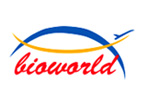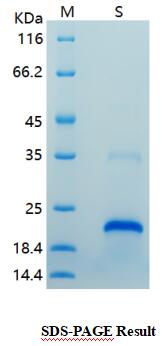Product Name :
CD357 Recombinant Protein Swiss-Prot :
Q9Y5U5 Host :
E.coli Tag :
≥0.5mg/ml Amino acid Sequence :
QRPTGGPGCGPGRLLLGTGTDARCCRVHTTRCCRDYPGEECCSEWDCMCVQPEFHCGDPCCTTCRHHPCPPGQGVQSQGKFSFGFQCIDCASGTFSGGHEGHCKPWTDCTQFGFLTVFPGNKTHNAVCVPGSPPAEP Restriction sites :
NdeI-XhoI Background :
TNFRSF18, also known as glucocorticoid-induced tumor necrosis factor-receptor (TNFR)-related protein (GITR) and activation-inducible TNFR family receptor, encodes a type 1 membrane protein of the TNF-receptor superfamily. Three alternatively spliced transcript variants encoding distinct isoforms have been reported. GITR is an immune cell co-stimulatory receptor expressed constitutively at high levels on CD4+CD25+ T regulatory cells (Tregs), at low levels on naïve and memory T cells, and is induced upon T cell activation. Studies show GITR can also be induced on NK cells, macrophages, and DCs. Although GITR does not have intrinsic enzymatic activity, TNFSF18 (also known as GITRL) expressed on antigen presenting cells binds to GITR, resulting in recruitment of TNFR-associated factor family members and activation of the NF-κB pathway in T cells. GITR ligation has been shown to play a role in CD8+ T cell activation, cytotoxicity, and memory T cell survival. In the thymus, GITR is thought to play a key role in dominant immunological self-tolerance through thymic Treg differentiation and expansion. Of note, GITR ligation inhibits Treg suppressive function and promotes effector T cell resistance to Treg suppression. Due to the combined effects on both Treg suppression and effector cell activation, GITR represents a unique opportunity for immunotherapeutic intervention in cancer. Soluble :
PBS, 4M Urea, PH7.4 Purification&Purity :
Transferred into competent cells and the supernatant was purified by NI column affinity chromatography and the purity is > 85% (by SDS-PAGE). Storage&Stability :
Store at 4°C short term. Aliquot and store at -20°C long term. Avoid freeze-thaw cycles. Expression vector :
pet-22b(+) BiowMW :
~15kDa Note :
For research use only, not for use in diagnostic procedure. concentration :
≥0.5mg/ml
CD357 Recombinant Protein Swiss-Prot :
Q9Y5U5 Host :
E.coli Tag :
≥0.5mg/ml Amino acid Sequence :
QRPTGGPGCGPGRLLLGTGTDARCCRVHTTRCCRDYPGEECCSEWDCMCVQPEFHCGDPCCTTCRHHPCPPGQGVQSQGKFSFGFQCIDCASGTFSGGHEGHCKPWTDCTQFGFLTVFPGNKTHNAVCVPGSPPAEP Restriction sites :
NdeI-XhoI Background :
TNFRSF18, also known as glucocorticoid-induced tumor necrosis factor-receptor (TNFR)-related protein (GITR) and activation-inducible TNFR family receptor, encodes a type 1 membrane protein of the TNF-receptor superfamily. Three alternatively spliced transcript variants encoding distinct isoforms have been reported. GITR is an immune cell co-stimulatory receptor expressed constitutively at high levels on CD4+CD25+ T regulatory cells (Tregs), at low levels on naïve and memory T cells, and is induced upon T cell activation. Studies show GITR can also be induced on NK cells, macrophages, and DCs. Although GITR does not have intrinsic enzymatic activity, TNFSF18 (also known as GITRL) expressed on antigen presenting cells binds to GITR, resulting in recruitment of TNFR-associated factor family members and activation of the NF-κB pathway in T cells. GITR ligation has been shown to play a role in CD8+ T cell activation, cytotoxicity, and memory T cell survival. In the thymus, GITR is thought to play a key role in dominant immunological self-tolerance through thymic Treg differentiation and expansion. Of note, GITR ligation inhibits Treg suppressive function and promotes effector T cell resistance to Treg suppression. Due to the combined effects on both Treg suppression and effector cell activation, GITR represents a unique opportunity for immunotherapeutic intervention in cancer. Soluble :
PBS, 4M Urea, PH7.4 Purification&Purity :
Transferred into competent cells and the supernatant was purified by NI column affinity chromatography and the purity is > 85% (by SDS-PAGE). Storage&Stability :
Store at 4°C short term. Aliquot and store at -20°C long term. Avoid freeze-thaw cycles. Expression vector :
pet-22b(+) BiowMW :
~15kDa Note :
For research use only, not for use in diagnostic procedure. concentration :
≥0.5mg/ml
Blocking peptide available as NCP0306P

 CD357 Recombinant Protein
CD357 Recombinant Protein 
 Datasheet
Datasheet COA
COA MSDS
MSDS SHIP
SHIP